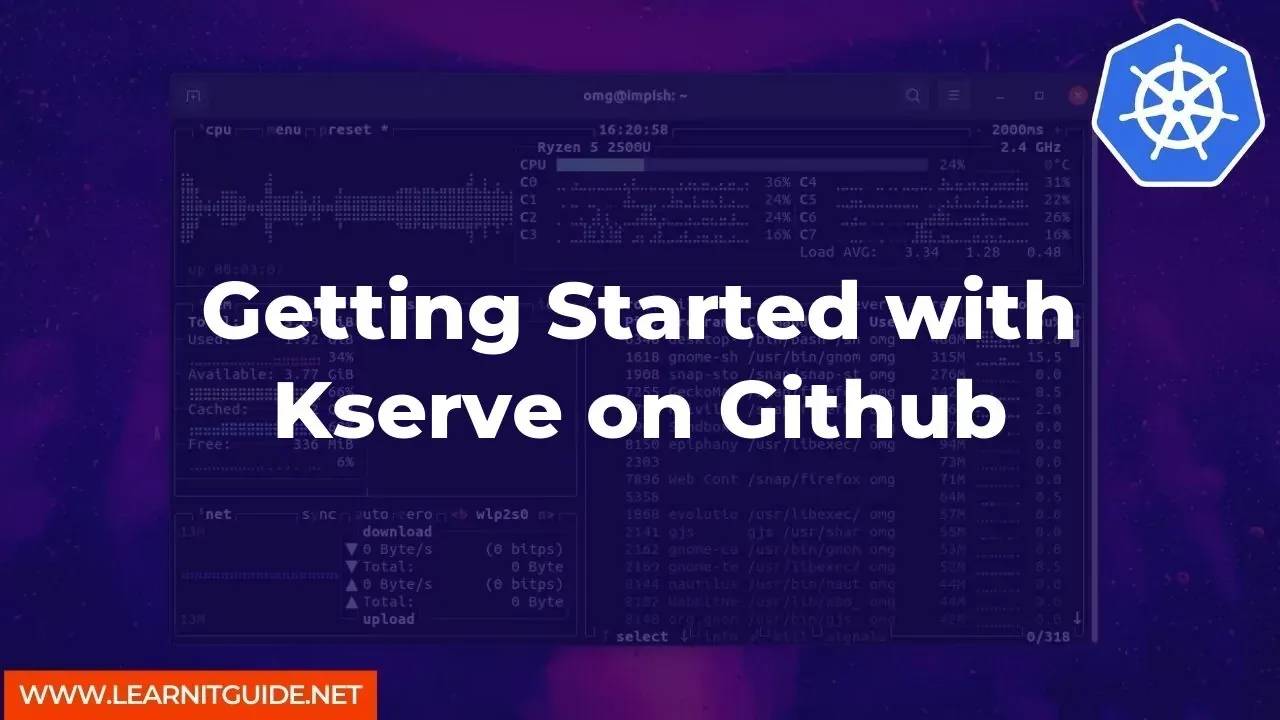Kserve is an open-source serving framework that enables developers to build, deploy, and manage machine learning models on Kubernetes. It provides a streamlined and scalable way to serve machine learning models at scale, making it a popular choice among developers. In this article, we will explore how to get started with Kserve on Github.
Prerequisites
- A Github account
- Basic knowledge of Kubernetes
Step 1: Install Kserve
The first step is to install Kserve on your Kubernetes cluster. You can do this by running the following command:
kubectl apply -f https://github.com/kserve/kserve/releases/latest/download/kserve.yaml
This will install Kserve and create the necessary resources on your Kubernetes cluster.
Step 2: Clone the Kserve Github Repository
Next, you need to clone the Kserve Github repository to your local machine. You can do this by running the following command:
git clone https://github.com/kserve/kserve.git
This will clone the Kserve repository to your current working directory.
Step 3: Build and Push Your Model
Now that you have the Kserve repository on your local machine, you can build and push your machine learning model to the Kserve registry. To do this, navigate to the examples/models directory in the Kserve repository and build your model using the following command:
docker build . -t <registry>/<model-name>:<model-version>
Replace <registry> with the name of your Docker registry, <model-name> with the name of your model, and <model-version> with the version of your model.
Once you have built your model, you can push it to the Kserve registry using the following command:
docker push <registry>/<model-name>:<model-version>
Step 4: Deploy Your Model
Now that you have built and pushed your machine learning model to the Kserve registry, you can deploy it using the following command:
ks apply default -c <model-name> -i <registry>/<model-name>:<model-version>
Replace <model-name> with the name of your model, and <model-version> with the version of your model.
Step 5: Test Your Model
Once your model is deployed, you can test it by sending a sample request to the Kserve endpoint. You can do this using the following command:
curl -H "Content-Type: application/json" -d @<input-file> <endpoint>
Replace <input-file> with the path to a JSON file containing the input data for your model, and <endpoint> with the URL of your Kserve endpoint.
In this article, we have explored how to get started with Kserve on Github. We have covered the installation of Kserve on your Kubernetes cluster, cloning the Kserve Github repository, building and pushing your machine learning model to the Kserve registry, deploying your model, and testing it using the Kserve endpoint. With Kserve, serving your machine learning models at scale has never been easier.
Related Searches and Questions asked:
That's it for this post. Keep practicing and have fun. Leave your comments if any.








0 Comments